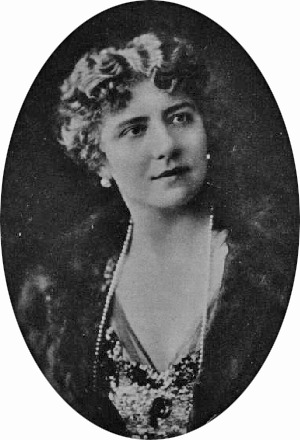Miriam Licette facts for kids
Miriam Licette (born September 9, 1885 – died August 11, 1969) was a famous English opera singer. She was a soprano, meaning she sang the highest female voice parts in operas. Her career lasted for 35 years, from the mid-1910s until after World War II. Miriam Licette also taught singing and created the Miriam Licette Scholarship to help young singers.
Contents
Early Life and Training
Miriam Licette was born as Miriam Lycett in a village called Over, Cheshire in 1885. Her father was a ship captain, so she spent some of her early years in places like Hong Kong and Singapore.
She studied singing at Lowther College in Lytham. A very famous singer named Dame Nellie Melba noticed Miriam's talent. Melba advised her to go to Paris to study with her own teacher, Mathilde Marchesi. Miriam also learned from Melba herself, and from other great teachers like Jean de Reszke and Vincenzo Sabbatini in Milan. She made her first public performance in Rome on November 7, 1911. She sang the main role in the opera Madama Butterfly, using the name Myriam Licette.
Becoming an Opera Star
Miriam Licette first performed in London in 1912 with the Royal Carl Rosa Opera company. She sang roles like Marguerite in Gounod's Faust, Micaela in Bizet's Carmen, and Pamina in Mozart's The Magic Flute.
In May 1915, Sir Thomas Beecham, a famous conductor, heard her sing. He was so impressed that he immediately asked her to perform at a Proms Concert. She became Beecham's favorite singer in his Beecham Opera Company. She sang Juliet in Gounod's Roméo et Juliette and other well-known opera songs. Miriam Licette performed at the Proms concerts many times throughout her career.
She also appeared in new operas. In 1915, she was in the first performance of Liza Lehmann's opera Everyman. In 1917, she sang Catherine Glover in the first UK performance of Bizet's The Fair Maid of Perth. She also sang Sieglinde in Wagner's Die Walküre in 1918.
Singing at Covent Garden
Miriam Licette sang at the famous Covent Garden opera house in London from 1919 to 1929. In 1919, she was very popular after singing in Faust. She also performed as Mimi in many shows of Puccini's La bohème. In July 1919, she created the role of Princess Yaroslavna in the first English performance of Borodin's Prince Igor.
In 1920, she sang Eva in The Mastersingers of Nuremberg. She also appeared in a new production of Delius's A Village Romeo and Juliet.
Later Career and Legacy
In 1922, Miriam Licette joined the British National Opera Company. Later that year, her marriage ended.
She continued to add new roles to her performances, like the main female role in Debussy's Pelléas et Mélisande in 1924. She also sang in Holst's Savitri. For 15 years, she performed annually in a special show of Samuel Coleridge-Taylor's The Song of Hiawatha.
Sadly, in 1931, her son Maurice passed away at the age of 18. The following month, she performed a major role in Richard Strauss's Der Rosenkavalier. In 1935, she was in the first British performance of Hindemith's opera Cardillac. Even when she was almost 60, in 1944, she entertained British troops in the Middle East during World War II.
After retiring from performing, Miriam Licette taught singing. She passed away on August 11, 1969, at the age of 83. Most of her money was used to start the Miriam Licette Scholarship. This scholarship helps young singers study in France, especially focusing on French songs.
Recordings
Miriam Licette made several recordings during her career. These include a full recording of Faust with Sir Thomas Beecham in 1930. She also recorded parts from Maritana, and sang Santuzza in Cavalleria rusticana and Nedda in Pagliacci.
She also sang as one of the soloists on the first electrical recording of Beethoven's 9th symphony in 1926. This was with the London Symphony Orchestra, conducted by Felix Weingartner.
Principal Roles
Here are some of the main roles Miriam Licette performed:
- Charpentier: The main role in Louise
- Gounod: Marguerite in Faust
- Gounod: Juliette in Roméo et Juliette
- Mozart: Pamina in The Magic Flute
- Mozart: Donna Anna in Don Giovanni
- Mozart: Countess Almaviva in The Marriage of Figaro
- Offenbach: Principal soprano in The Tales of Hoffmann
- Puccini: Cio-Cio San in Madama Butterfly
- Puccini: Mimi in La bohème
- Verdi: Desdemona in Otello
- Wagner: Eva in The Mastersingers of Nuremberg


